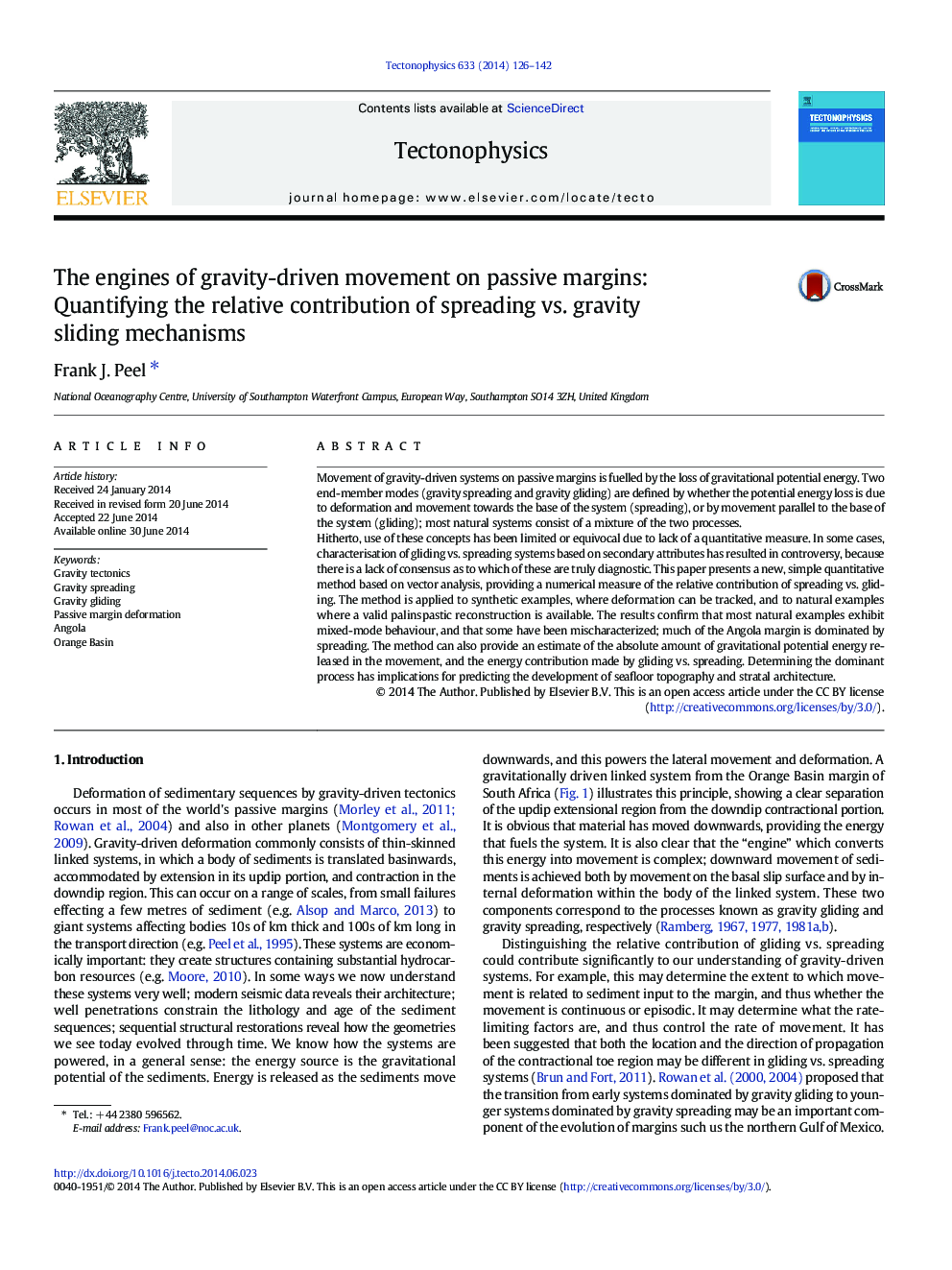| Article ID | Journal | Published Year | Pages | File Type |
|---|---|---|---|---|
| 6433803 | Tectonophysics | 2014 | 17 Pages |
â¢Gravity gliding and gravity spreading on passive margins.â¢A simple analysis based on particle displacements reveals the energy source.â¢Passive margin systems are easily placed on the spreading/gliding spectrum.
Movement of gravity-driven systems on passive margins is fuelled by the loss of gravitational potential energy. Two end-member modes (gravity spreading and gravity gliding) are defined by whether the potential energy loss is due to deformation and movement towards the base of the system (spreading), or by movement parallel to the base of the system (gliding); most natural systems consist of a mixture of the two processes.Hitherto, use of these concepts has been limited or equivocal due to lack of a quantitative measure. In some cases, characterisation of gliding vs. spreading systems based on secondary attributes has resulted in controversy, because there is a lack of consensus as to which of these are truly diagnostic. This paper presents a new, simple quantitative method based on vector analysis, providing a numerical measure of the relative contribution of spreading vs. gliding. The method is applied to synthetic examples, where deformation can be tracked, and to natural examples where a valid palinspastic reconstruction is available. The results confirm that most natural examples exhibit mixed-mode behaviour, and that some have been mischaracterized; much of the Angola margin is dominated by spreading. The method can also provide an estimate of the absolute amount of gravitational potential energy released in the movement, and the energy contribution made by gliding vs. spreading. Determining the dominant process has implications for predicting the development of seafloor topography and stratal architecture.
Graphical abstractDownload full-size image
